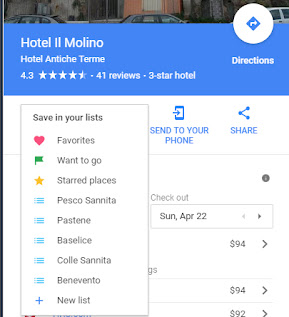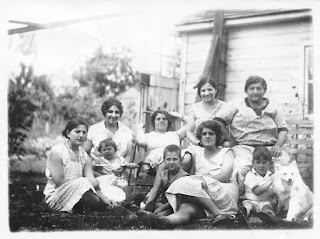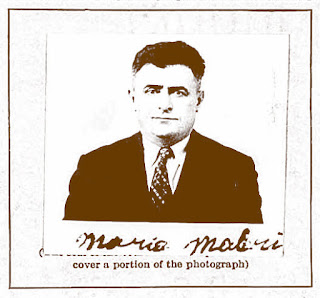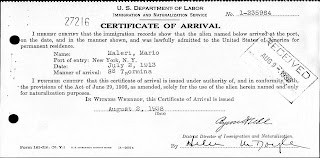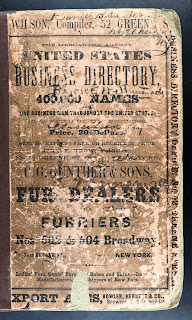Search the news for a slice of history to round out your ancestor's story.
Newspapers haven't been very helpful to me in my family tree research. There are a few reasons for that:
- My ancestors didn't settle in the USA until 1898.
- They arrived as illiterate laborers.
- They never made news.
But that doesn't mean there's no value in old newspapers for someone like me.
![I get angry when my seat on an airplane is too cramped. My poor ancestors rode in the belly of one of these. I get angry when my seat on an airplane is too cramped. My poor ancestors rode in the belly of one of these. ... Ancestry.com. New York Port, Ship Images, 1851-1891 [database online]. Provo, Utah: MyFamily.com, Inc., 2004. Original data: Ship images obtained from and reproduced courtesy of Mystic Seaport.](https://blogger.googleusercontent.com/img/b/R29vZ2xl/AVvXsEjrXM3ChMWg4WfEZpcqoi05bTQd5lSKLcseicXO345jpmMZtVS31qAIUhNTbnAtbVVq9dklCiSuDbwH3L1pBupNXfJikq8kpIdxw71_KKUd_7g0solx2WMTs8j28SLvIfNGzku04s_40Eg/w400-h301/073019-ship.jpg) |
| I get angry when my seat on an airplane is too cramped. My poor ancestors rode in the belly of one of these. |
The Library of Congress has a free collection of U.S. newspapers from 1789 to 1963. It's called Chronicling America. You may find your ancestors' social news, like engagements and weddings. You may learn that an ancestor was a criminal, or a lawyer.
Narrow your search by date, place, and newspaper, and look for clippings that belong in your family tree. Start at the Advanced Search screen and enter some information.
 |
| If you have any historic event in mind from 1789–1963, you should find a newspaper article about it. |
Here are the best things I've found so far.
Ship Arrivals
My first ancestors to arrive in America were my great grandmother's family in 1898. My great grandparents followed them in 1899. Since I have their ship manifests in my family tree, I know the exact dates of arrival and the ship names.
I thought the New York newspapers should have some mention of the ships arriving each day. And they do. It's only a couple of lines, but here's what I learned about my great grandparents' 1899 voyage:
- The ship made 8 stops to pick up passengers and merchandise, before sailing to New York.
- My great grandparents boarded in Naples on 3 July 1899, which was the 7th stop on the ship's journey.
- There were 162 steerage passengers on the Karamania for this voyage.
- They arrived in New York Harbor at 6:00 p.m. on 23 July 1899.
My great grandmother's parents and siblings arrived a year earlier. Here's what I learned from the New York Tribune listing of ship arrivals:
- The ship made 6 stops to pick up passengers and merchandise before sailing to New York.
- My family boarded in Naples on 21 May 1898, which was the 5th stop on the ship's journey.
- There were 424 steerage passengers on the California for this voyage. That sounds packed!
- They arrived in New York Harbor at 7:25 p.m. on 7 June 1898.
That date is new information for me. My family's ship manifest has a blank in the arrival date field. But Ancestry.com has indexed this manifest with an arrival date of 8 June 1898. The newspaper clipping tells me the ship actually arrived the night before.
My Grandfather's WWI Battle
I've written before about using newspapers to learn about my grandfather's capture and imprisonment in World War I.
The last time I visited Italy, I went to the archives for the province of Benevento. I wanted to see my maternal grandfather's military record at the archives. These one-page records are jam-packed with facts. I've seen these records available online if the soldier died in the service of his country. But my grandfather lived to be 96 years old.
So I walked into the archive building with the volume number and record number I needed to see. I had a couple of sentences prepared in Italian to get me started.
I took photographs of the page, so now I have every last detail. I learned the name of his big battle, the date of my grandfather's capture, and the location of his prison camp.
At home I used the Chronicling America website to find news about the battle. It was an epic failure for the Italian Army. My grandfather was lucky to survive a prison camp that starved so many fellow soldiers to death.
The newspaper articles take this deeply personal story and set it on the world stage.
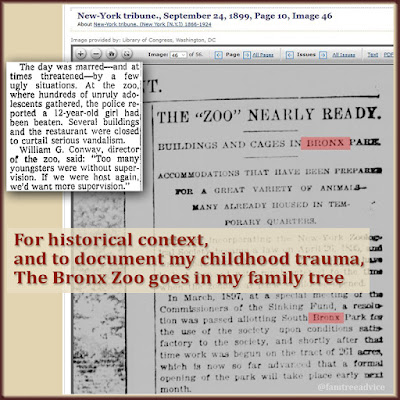 |
| News at the time of my family's arrival triggered a childhood memory for me. |
Your Own History
I did a more general search of Chronicling America for "Bronx" in 1898 or 1899. That's when my family arrived there. The first thing to catch my eye was an article published 60 years before I was born.
The headline is THE "ZOO" NEARLY READY. It explains that the Bronx Zoo was almost ready to open for the first time. This reminded me of my own traumatic visit to the Bronx Zoo in May 1971.
At the New York State Library 10 years ago, I found a New York Times article about the Bronx Day events happening on that 12th of May 1971.
There's a brief reference to my grade school class getting terrorized by a gang of hoodlums:
"The day was marred…by a few ugly situations. At the zoo, where hundreds of unruly adolescents gathered, the police reported a 12-year-old girl had been beaten. Several buildings and the restaurant were closed to curtail serious vandalism.
"William G. Conway, director of the zoo, said: 'Too many youngsters were without supervision. If we were host again, we'd want more supervision.'"
This really underplays what happened. My classmates know the story. But I'm glad to have this article. Now I'll always remember the date of that doomed class trip, cut short due to beatings, threats, and robbery.
If your ancestors were not in charge, not in high-society, and not on trial, you may not find their names in the paper.
If that's the case, be broader and more general in your newspaper searches. You may find clippings you'll want to add to your family tree.







